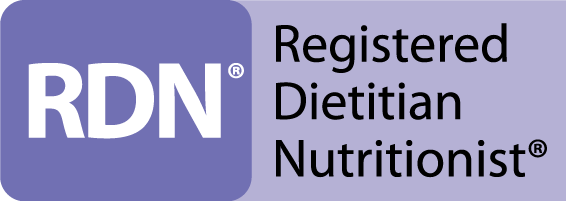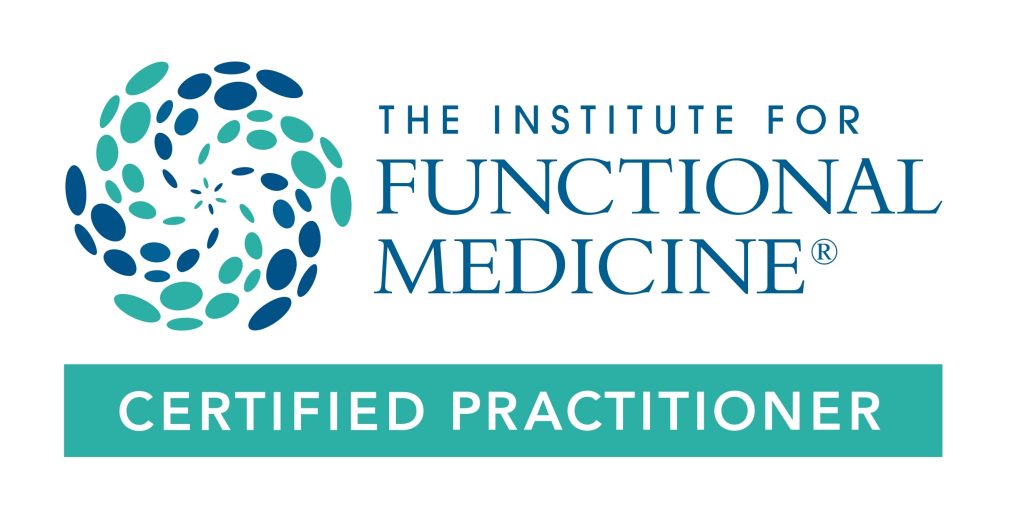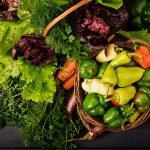Without a doubt since the discovery of penicillin in the 1920`s, countless lives have been saved in fight with bacterial infections. Their use continues to be crucial in modern day medicine, and their role remains to be of utmost importance. More and more research studies continue to evaluate the possibility of adverse events when overused and overprescribed. Subsequently, this is why utilization of targeted functional nutrition and lifestyle strategies make a difference worth exploring and eventually practicing.
In 2018, the Federation of European Microbiological Societies (FEMS) reported administration of antibiotics to over 10% of European children and accounted 25% antibiotic prescriptions to the pediatric population in USA per 2008 retrospective cohort study review (1). They also included a review of the effects of antibiotics on microbiome in children, correlating them to long lasting complications of obesity, behavior and neurodevelopment, allergies, autoimmunity, IBD, and weight gain.
Multiple studies demonstrate the ability of antibiotic treatment to alter both infant and adult microbiome composition causing microbial imbalance known as dysbiosis, which in turn is correlated with impaired health and chronic inflammatory diseases if systematically left untreated. In a 2011 Nature Review Microbiology, looking at “how host genetics and environment shape the gut microbiota and how all of them may interact in the context of chronic disease”, researches list multiple disorders associated with altered gut microbiome.(4) The list includes, but is not limited to: IBS, IBD, gallstones, Colorectal Cancer, recurrent C.Diff infections, arthritis, asthma, autoimmune disorders, diabetes, eczema, metabolic syndrome, mood disorders, multiple sclerosis, obesity, etc. Hippocrates words” All diseases begin in the gut” might hold great truth after all.
What Happens to the GUT microbiome diversity during only 1 round of broad-spectrum antibiotic therapy administration?
Palleja et al in 2018: They followed 12 healthy adults over 6-month time period, after 4-day intervention with a cocktail of 3 antibiotics, commonly used in ICU (meropenem, gentamicin and vancomycin). (3)
- At ~ 45 days, shotgun sequencing –based metagenomics analysis showed gut microbiota has recovered near base line composition.
- At 6-month mark, 9 common species which were present in all subjects prior to the treatment remained undetectable.
Study results confirm the hypothesis that broad spectrum antibiotics may alter the diversity and richness of gut microbiome. It is this poor diversity, decrease in beneficial species, and subsequent increase in pathogenic ones that is associated with obesity, certain autoimmune conditions, metabolic disorders, and overall poor health. Even though researchers described the ability of antibiotic exposure to affect the gut microbiota of healthy young adults as “mild, yet long lasting imprint”, the resilience of gut microbiome to regenerate was duly noted. However, one might agree with the concern of what happens to the diversity of our gut microbiome, after MULTIPLE exposures to antibiotics we might endure during our lifetime. How that might affect our overall health and wellbeing and how it correlates to chronic disease.
Probiotics and antibiotics taken together, what is that all about?
Wieërs, Grégoire et al in 2021 in a randomized placebo-controlled trial of 120 patients, age median of 78 years old, with multiple co- morbidities, explored whether probiotic intake during in-hospital antibiotic treatment will prevent colonization of gut microbiota with multi-drug-resistant bacteria. Participants were treated for 10 days with amoxicillin-clavulanate antibiotics and comparing the effects of a 30-day treatment with placebo Saccharomyces boulardii and a probiotic mixture containing S. boulardii, L. acidophilus, L.paracasei, and B.lactis . Probiotic treatment was initiated within 48 hrs of antibiotic administration. Stool samples were collected at the time of the inclusion of the trial, at the end of the antibiotic treatment and at the end of the study treatment. Results showed that taking probiotic mixture containing strains of S. Boulardi combined with Lacto and Bifidobacterium “influenced the antibiotic treatment by counteracting the colonization of the colon microbiota with antibiotic- resistant pathogens”.(2)
As shown above, simply by incorporating probiotics with specific strains with our antibiotic therapy we can assure integrity and maintenance of gut microbiome. in addition, from functional nutrition perspective, incorporating food and lifestyle practices to continue to feed and support diversity of gut microbiome would be an overall win-win scenario.
Generally following guidelines and nutrition recommendations sometimes tends to feel like a full-time job and exhausting it may get quite easy to be non-compliant. All things considered, how I encourage my patients to approach this is by asking ourselves 3 questions:
- Did I feed my gut today? Recall 3 P`s + S : Pre-Probiotic & Polyphenol rich foods + Soluble fiber.
- Did I avoid simple sugars?
- Did I invest time in self-care?
Prebiotic & Probiotic rich foods -> aid in microbiome health and maintenance.
- Fermented anything: kefir, yogurt, kimchi, miso, fermented vegetables such as cabbage, pickles, red bell peppers, green tomatoes massively used in Mediterranean cuisine.
- Allium Vegetable family: garlic, onion, leeks and chives. Using them in soup is a good strategy.
- Green Color vegetables: asparagus, Jerusalem artichoke, peas, soybeans
- Fruits-> such as bananas, apples, and berries
- Honey-> prebiotic(food) for beneficial strains due to prebiotic oligosaccharides and antibacterial components, which when ingested with probiotic strains synergistically enhance the probiotic strain efficacy against pathogens. (11)
Oral probiotic-> look for mixture containing strains of S. Boulardi combined with Lacto and Bifidobacterium. Given that supplement industry is not heavily regulated, on more tips and guidance on how to pick clean and safe supplements refer to another informative read ” The ultimate guide to buying safe supplements” article on ProjectofHealth.com.
Polyphenols-> bioactive compounds found in colorful plant foods. Once ingested, depending on the degree of structural complexity, they may be readily absorbed in small intestine (5-10 %), or accumulate in large intestinal lumen and subsequently broken down to certain metabolites which might be responsible for the health effects from colorful rich foods. (7) Researchers conclude “dietary polyphenols and their metabolites contribute to the maintenance of gut health by stimulation of growth of beneficial bacteria and inhibition of pathogen bacteria.”
- Epigallocathechin-3-gallate (EGCG) -> sensitizes methicillin resistant S. aureus(MRSA)to beta-lactam antibiotics; increases cell wall thickness; may alter bacterial cell wall and inhibit bacterial cell growth. Food Sources: Green Tea, Matcha Tea, berries, grapes, red wine, chocolate and apples
- Resveratrol-> promotes growth of Bifidobacterium and shifts microbiome growth towards beneficial species. Found in skin of red grapes, tea, berries, pomegranates, nuts (peanuts, almonds), blueberries, and dark chocolate.
- Quercetin: -> inhibits DNA & RNA bacterial synthesis. Food sources: apples, onion, broccoli, kale, green beans, broccoli, alfalfa sprouts, apples, apricots, berries, nuts, seeds, tea, wine, cocoa.
Soluble Fiber -> Increases beneficial SCFA’s (short chain fatty acids) known for their role in strengthening gut barrier, gut motility, immune-modulator role as well as being fuel for intestinal epithelial cells. (5) Food sources: oat bran, barley, nuts, seeds, beans, lentil, citrus fruits, berries, apples.
Avoid-> Simple and Added Sugars: Recent 2020 study looking at mechanisms underlying the pro-inflammatory effect of dietary fructose showed that it is due to “changes in composition microbiota and metabolic function of resident enteric microbiota”.(6) So, I would like you to start thinking of it this way: if it is a simple and added sugar food item, it will feed the harmful and pathogenic bacteria, delay healing, and feed the chronic inflammation cycle.
Practice Self Care Daily: Lifestyle as Medicine: Sleep; Movement and Physical Activity 30 min/5 days /week; Stress-> coping; stress relief techniques such as breathing, singing, walking in nature etc would be some very common ones that we have taken granted for. For all these lifestyle modifications if not practiced, have been found not to only alter gut composition, but also play role in inflammation, immunity resilience, and pro-inflammatory cytokine production via multiple mechanisms. (8)(9)(10).
Bid you good health,
Biljana Sofronijoska Rece RDN, LD, IFMCP
This information is intended for informational purposes only. It is not supposed to be interpreted as specific medical advice. Regarding therapies, diagnosis and or health conditions please consult with your qualified healthcare provider.
References:
- Hadar Neuman, Paul Forsythe, Atara Uzan, Orly Avni, Omry Koren, Antibiotics in early life: dysbiosis and the damage done, FEMS Microbiology Reviews, Volume 42, Issue 4, July 2018, Pages 489–499, https://doi.org/10.1093/femsre/fuy018
- Wieërs, Grégoire et al. “Do Probiotics During In-Hospital Antibiotic Treatment Prevent Colonization of Gut Microbiota With Multi-Drug-Resistant Bacteria? A Randomized Placebo-Controlled Trial Comparing Saccharomycesto a Mixture of Lactobacillus, Bifidobacterium, and Saccharomyces.” Frontiers in public health 8 578089. 8 Mar. 2021, doi:10.3389/fpubh.2020.578089
- Palleja, A., Mikkelsen, K.H., Forslund, S.K. et al.Recovery of gut microbiota of healthy adults following antibiotic exposure. Nat Microbiol 3, 1255–1265 (2018). https://doi.org/10.1038/s41564-018-0257-9
- Spor, Aymé et al. “Unravelling the effects of the environment and host genotype on the gut microbiome.” Nature reviews. Microbiology 9,4 (2011): 279-90. doi:10.1038/nrmicro2540
- Martin-Gallausiaux, Camille, et al. “SCFA: Mechanisms and Functional Importance in the Gut.” Proceedings of the Nutrition Society, vol. 80, no. 1, 2021, pp. 37–49., doi:10.1017/S0029665120006916.
- Montrose, David C et al. “Dietary Fructose Alters the Composition, Localization, and Metabolism of Gut Microbiota in Association With Worsening Colitis.” Cellular and molecular gastroenterology and hepatology 11,2 (2021): 525-550. doi:10.1016/j.jcmgh.2020.09.008
- Cardona, Fernando et al. “Benefits of polyphenols on gut microbiota and implications in human health.” The Journal of nutritional biochemistry 24,8 (2013): 1415-22. doi:10.1016/j.jnutbio.2013.05.001
- Matenchuk, Brittany A et al. “Sleep, circadian rhythm, and gut microbiota.” Sleep medicine reviews 53 (2020): 101340. doi:10.1016/j.smrv.2020.101340
- Molina-Torres, Guadalupe et al. “Stress and the gut microbiota-brain axis.” Behavioural pharmacology 30,2 and 3-Spec Issue (2019): 187-200. doi:10.1097/FBP.0000000000000478
- Mailing, Lucy J.1; Allen, Jacob M.2; Buford, Thomas W.3; Fields, Christopher J.4; Woods, Jeffrey A.1,5Exercise and the Gut Microbiome: A Review of the Evidence, Potential Mechanisms, and Implications for Human Health, Exercise and Sport Sciences Reviews: April 2019 – Volume 47 – Issue 2 – p 75-85 doi: 10.1249/JES.0000000000000183
- Anand Mohan, Siew-Young Quek, Noemi Gutierrez-Maddox, Yihuai Gao, Quan Shu, Effect of honey in improving the gut microbial balance, Food Quality and Safety, Volume 1, Issue 2, 1 May 2017, Pages 107–115, https://doi.org/10.1093/fqsafe/fyx015









5 Comments. Leave new
This topic is close to my heart… Thank you! How can I get in touch with you?
Hello,
Please refer to the email in contact me page
Hi, I always check weblog posts here in the early hours of the morning, as I love to gain more knowledge. I have been reading many of your stories, and I must say that they are pretty nice. I will definitely bookmark your site.
I am sure this article has touched all the internet users, and it is really a good post on building up a new webpage.
I like the valuable information you provide on your articles.